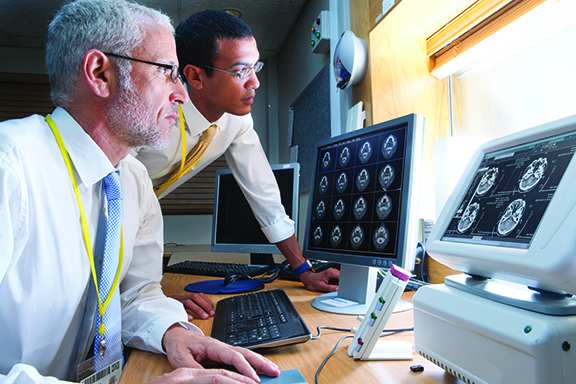Burnout is a major issue that affects radiologists more than medical practitioners in any other specialty. Several factors contribute to exhaustion in the medical profession but radiologists face the major impact because of great pressure to perform more in lesser time. Bureaucratic workload, lack of autonomy in their field, and their compensation related directly to their production output put radiologists in dire need of ways to reduce their pain points and improve efficiency.
As stated in a recent study that is based on identifying the challenges of diagnostic radiology, effective time management and minimizing distractions at work can help radiologists fight the implications of burnout and enhance job satisfaction. This is imperative in the field of radiology because any sort of disturbance in the imaging room can cause errors.

“Increasing efficiency can result in greater time and autonomy allowing radiologists to focus their attention on the aspects of their job that they enjoy and find most meaningful,” said Creighton Lewis, MD, Department of radiology at the University of Colorado in Aurora.
Discussed here are the ways how radiologists can avoid outside disruptions, reduce burnout and focus more on their work.
1) Keep Away from Phone Call Distractions
Repetitive phone calls inside the reading room can interrupt the radiologist from doing his job in an efficient manner. To prevent this, one can hire a reading room assistant or physician extender who is capable of answering common questions over the phone and allow the radiologist to focus on his work. Another strategy is to assign radiologists who have fewer expectations with regard to reading studies. Healthcare providers can also set up an “educational practice protocol” that helps address the commonly asked questions raised by the referring physicians.
2) Cut Down on Emails
Email distraction is another major reason that affects the performance of the radiologists and eventually causes burnout. Going through bulk emails can be wastage of valuable time, which the radiologist can otherwise utilize to give more output with efficiency. In addition to this, it can also be stressful for the radiologists to go down the email list over and over again to identify which messages are urgent.
To overcome this challenge, experts suggest David Allen’s 5 D’s as recommended in Getting Things Done: The Art of Stress-Free Productivity. The five D’s are:
- Delete it – If you do not require it, delete it.
- Do it – If the task can be done in less than 2 minutes, do it now.
- Delegate it – If you have someone reliable, delegate the job to him.
- Deposit it – Use a well-organized and easy-to-access archiving system.
- Defer it – If the task would take more time to complete, have a dedicated system to schedule the tasks for later and track them.
3) Reduce Access to the Internet
Fast-growing use of Smartphones and the increasing popularity of the Internet do cause major distractions, having social media notifications, emails, calls, and messages right at the fingertips. To minimize interruptions caused by this, it is crucial to allocate time between cases to take a break and relax by accessing the Smartphone. However, when reading cases, it should be kept in Do-Not-Disturb mode or placed away to reduce disruptions.
4) Effective Optimization of Time
Rather than working for hours at a stretch, taking short and planned breaks can help boost productivity. Customized templates, structured reporting, or affordable cloud-based EMR/RIS/PACS solutions by sepStream™ can further help improve radiologist’s efficiency. The scalable and powerful solutions aid in streamlining the imaging processes, ensuring timely delivery and maximum customer satisfaction.